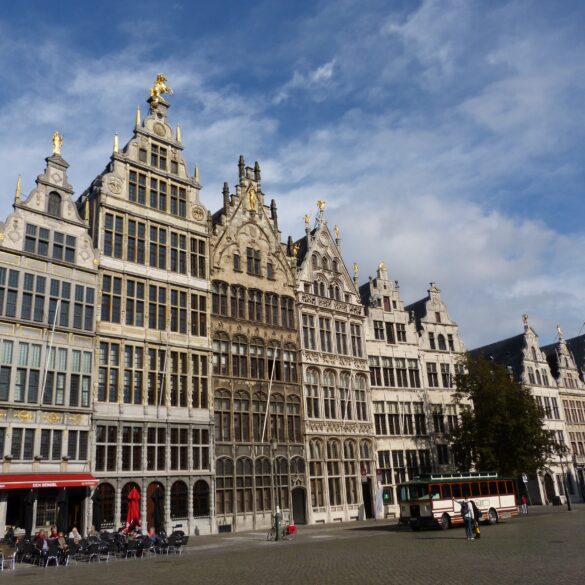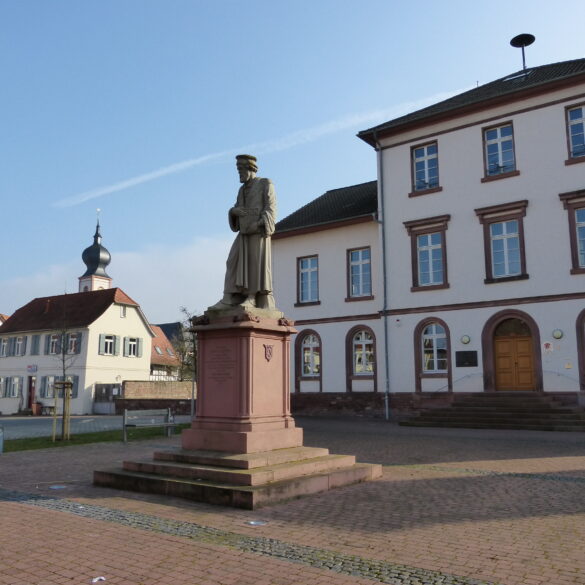You know those hats that men like Winston Churchill used to wear?
The ones with a brim, and a band around it, and what looks like a dent on top of the hat in the middle?
Well those are called Homburg hats and they were supposedly invented in the town of Bad Homburg, Germany.
We didn’t know that before visiting there a few months ago.
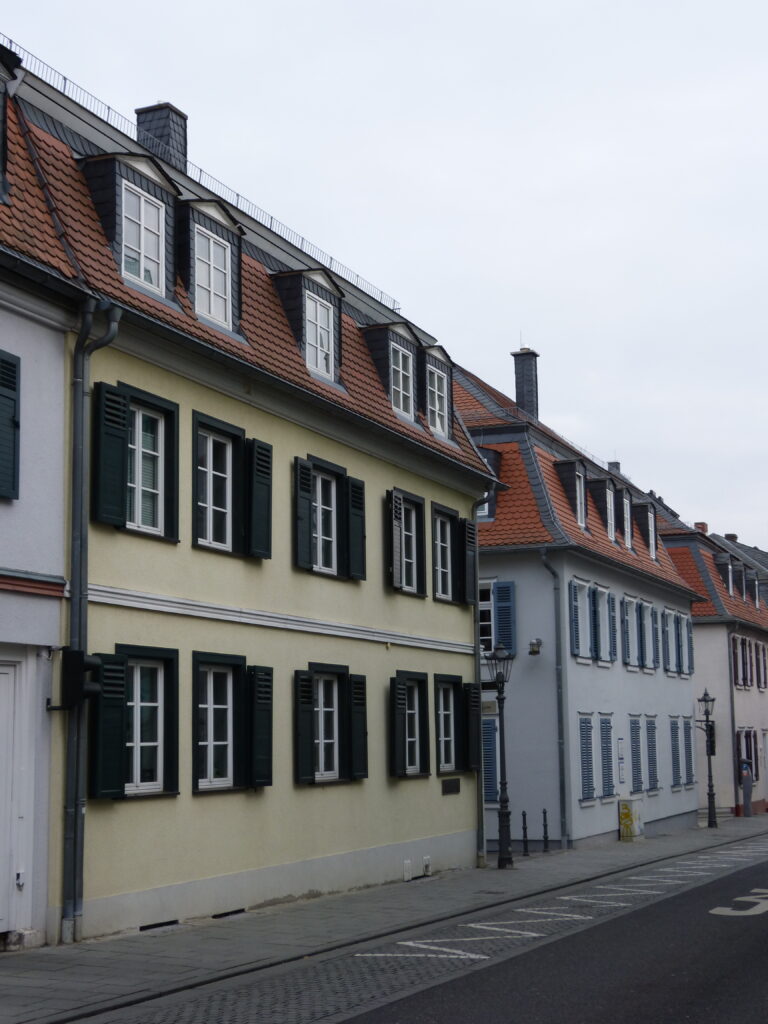
That yellow house with the green shutters was the Möckel factory, where the hat was created.
As usual, our first stop was the tourist information office to see if that had a walking tour map.
They did have a booklet, in English, with two different walking tours in it.
We chose the “Town Center and Old Town” walk.
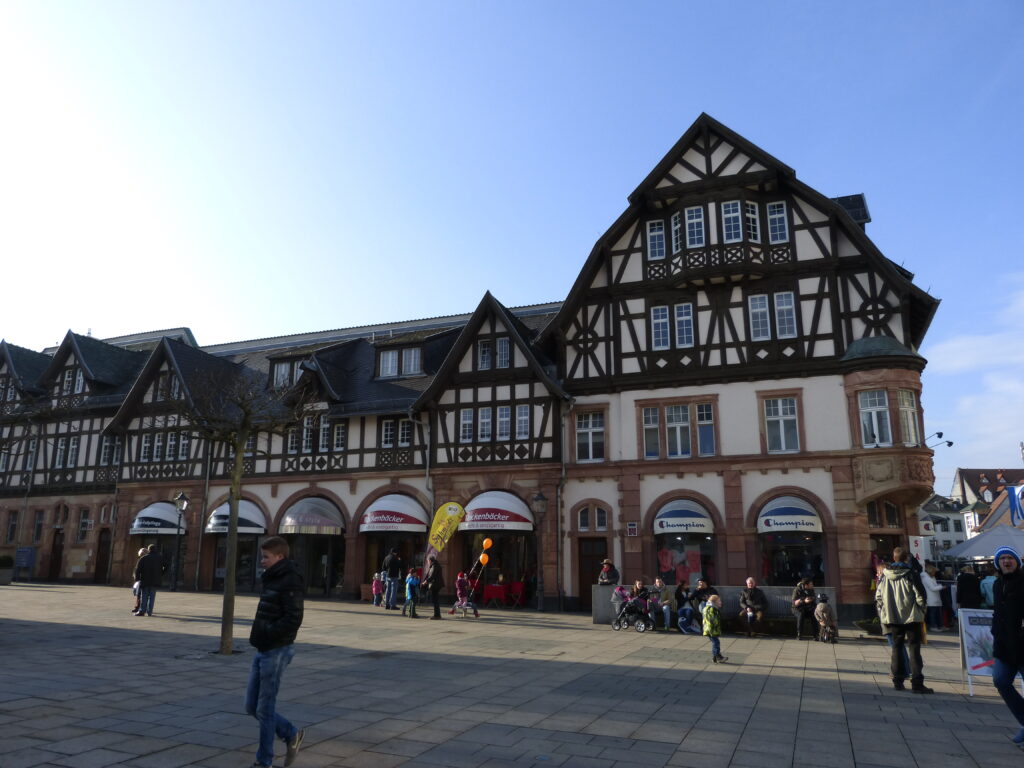
Bad Homburg has been a spa resort town for many years.
Any time you see the name of a German town with the word “bad” (German for “bath”) in it, it means there is a bath or spa there.
Bad Homburg is actually one of the wealthiest towns in all of Germany.
In fact their license plates all contain the identifying letters HG, and Germans joke that instead of standing for Homburg, it stands for “Habe Geld” (have money).
One of the first and best things we saw in town was the Erlöserkirche or Church of the Redeemer.
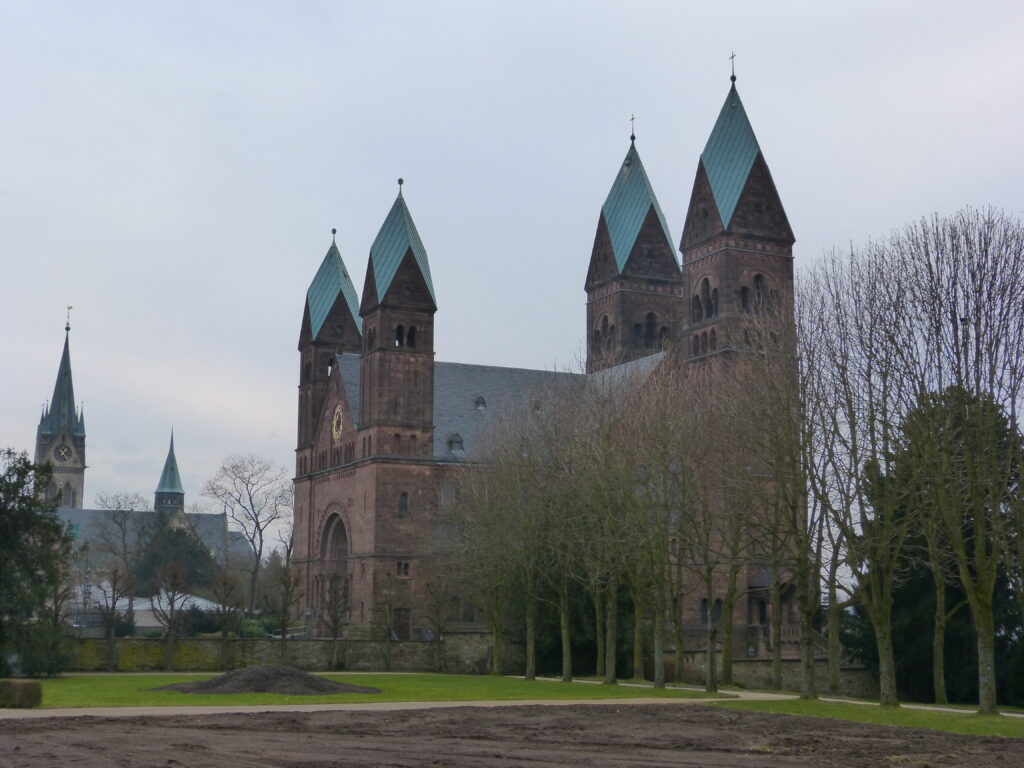
It was commissioned by Kaiser (Emperor) Wilhelm II and his wife.
Wilhelm II, grandson of Queen Victoria, II had a summer residence in Bad Homburg.
Edward VII, who became king after Victoria died, visited Bad Homburg frequently.
He is the one who is said to have popularized the Homburg hat after buying one there.
Anyway, as soon as we walked into the church I said “This looks like the Hagia Sophia in Istanbul”.
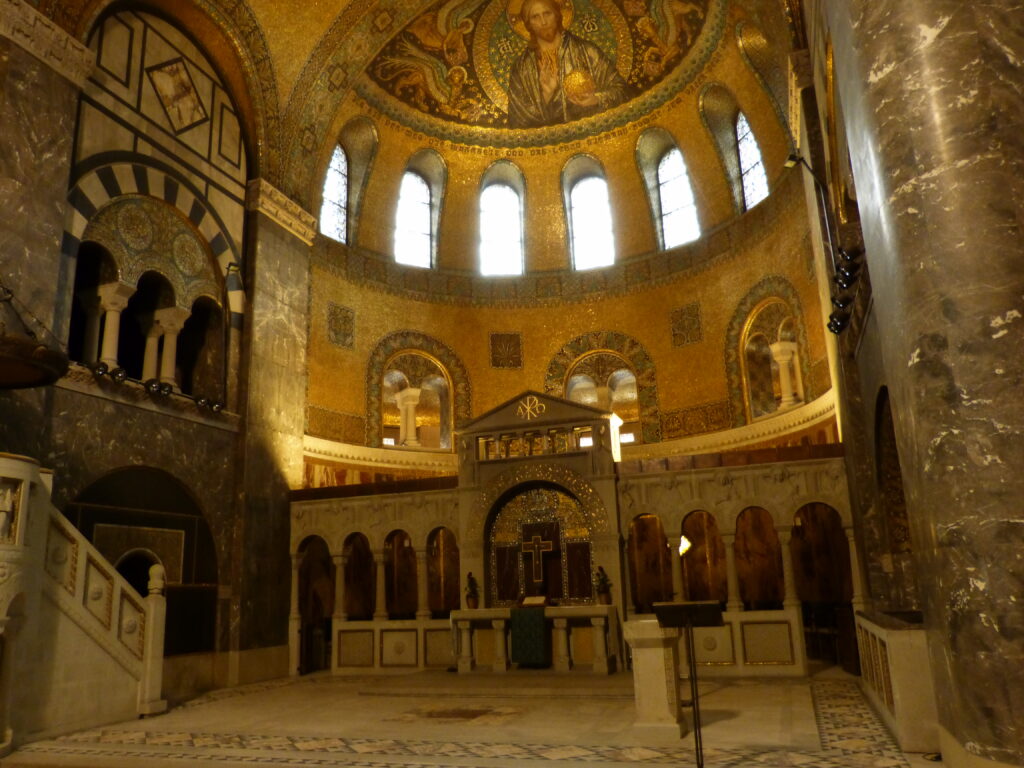
Indeed it is sometimes referred to as Bad Homburg’s version of the Hagia Sophia, which also is highly decorated with mosaics and marble.
Leaving the church, we continued to the nearby Schlosspark or Palace Park.
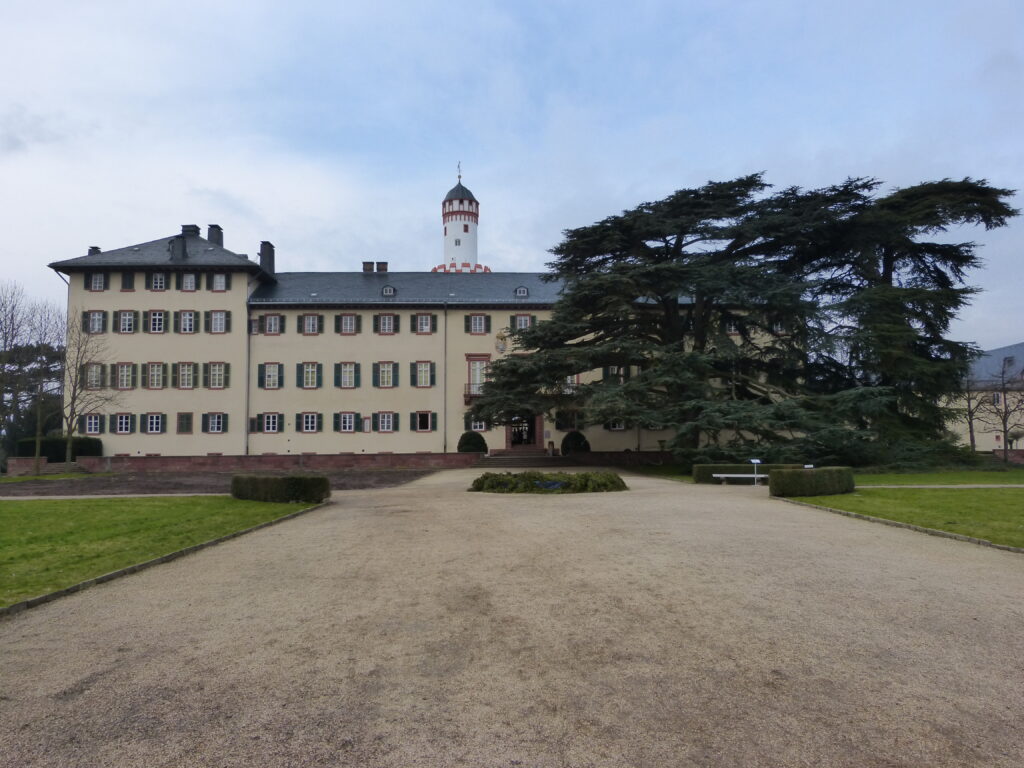
Outside of the palace are some amazingly huge Lebanon Cedar trees that were planted in 1820.
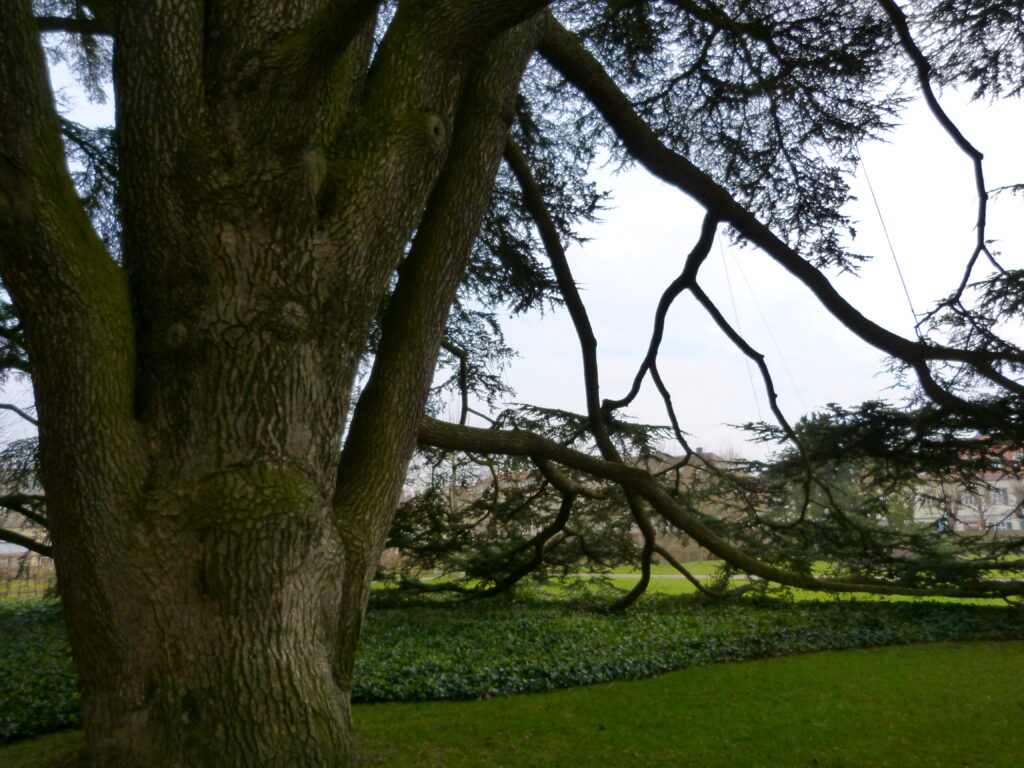
The limbs are so huge that they are held up with wires, some of which you can see on the right-hand side of the photo.
Before the palace was built, there was a fort on the site.
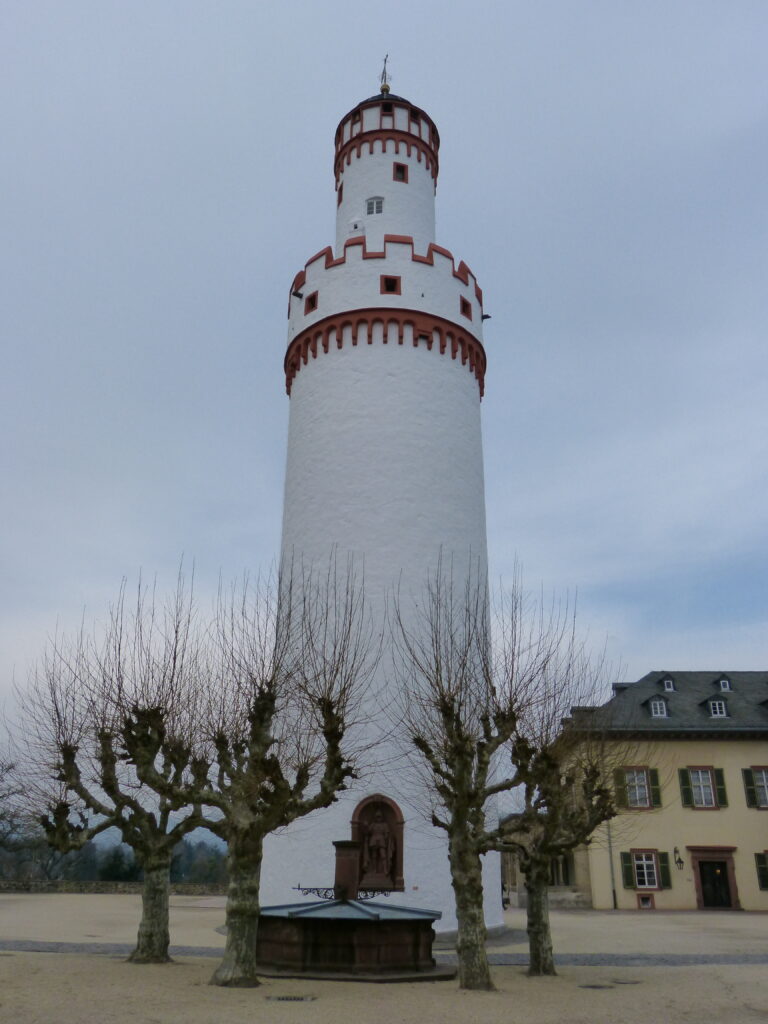
The tower, called the White Tower for obvious reasons, is all that remains of the fort.
Our walk took us past a small lake, where some kids were having fun playing with the ducks.
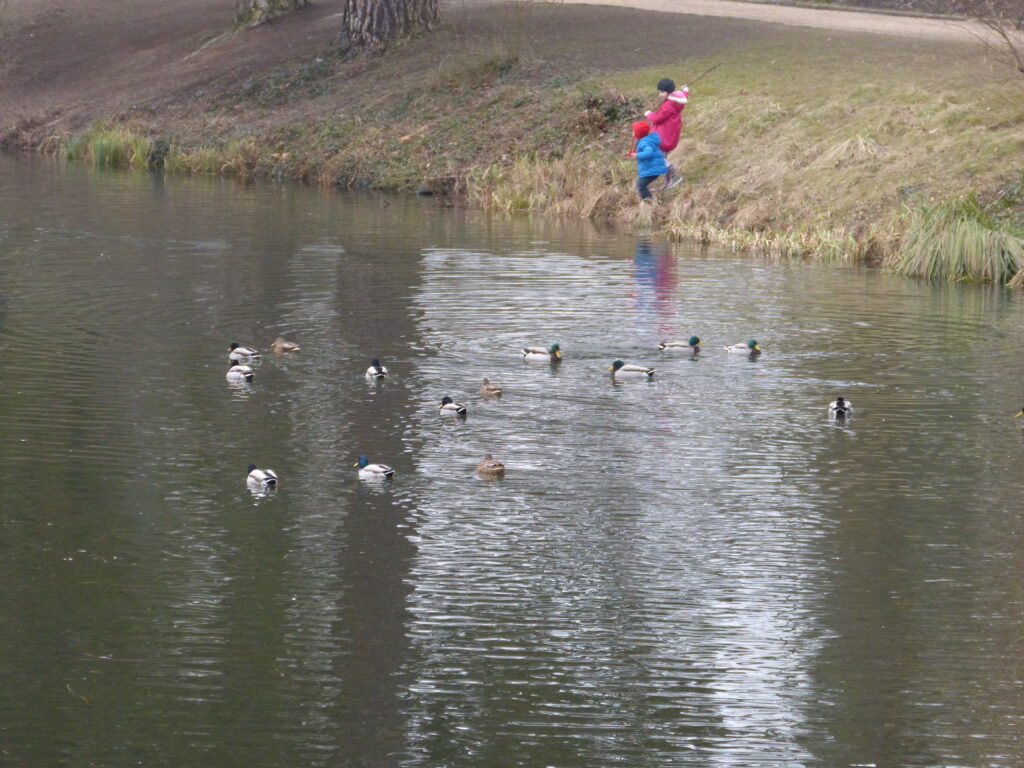
Although on closer inspection of that photo, it looks like the girl in pink is thinking about using that stick to push the other one in the water. Maybe it’s just me.
As I said in our recent blog about the town of Babenhausen (LINK), a good number of German towns have a Hexenturm or Witches Tower.
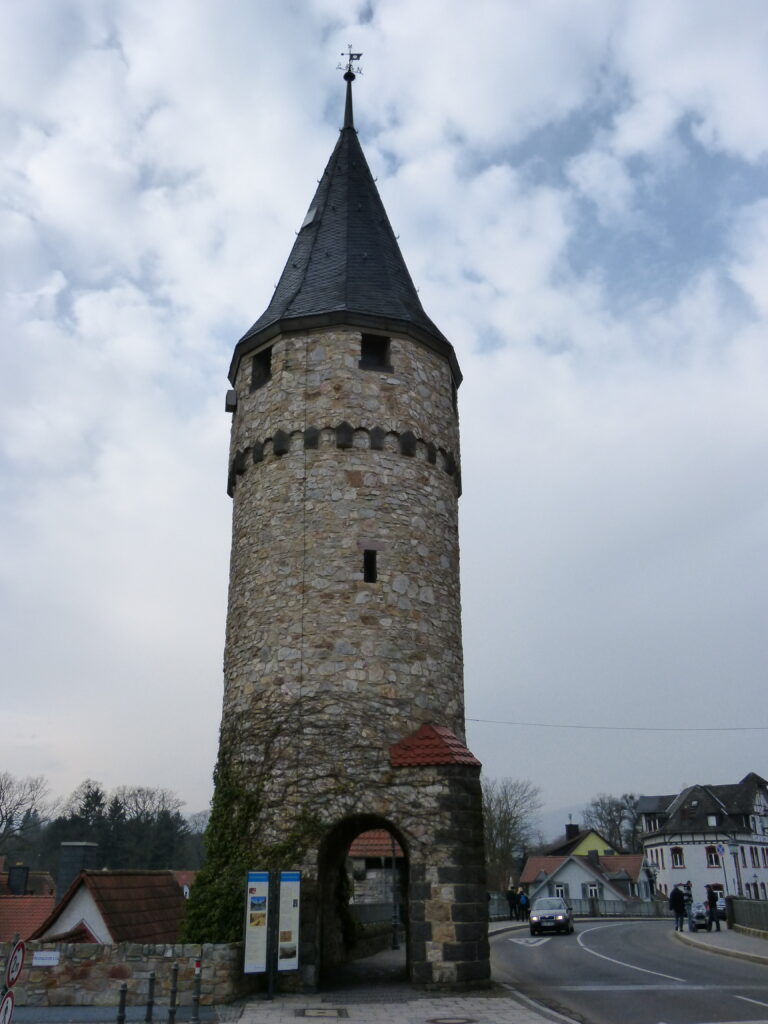
Bad Homburg is no exception.
The tower stands on a bridge that leads to the Old Town.
Did I hear someone say “More towers, please!”?
Okay, here you go.
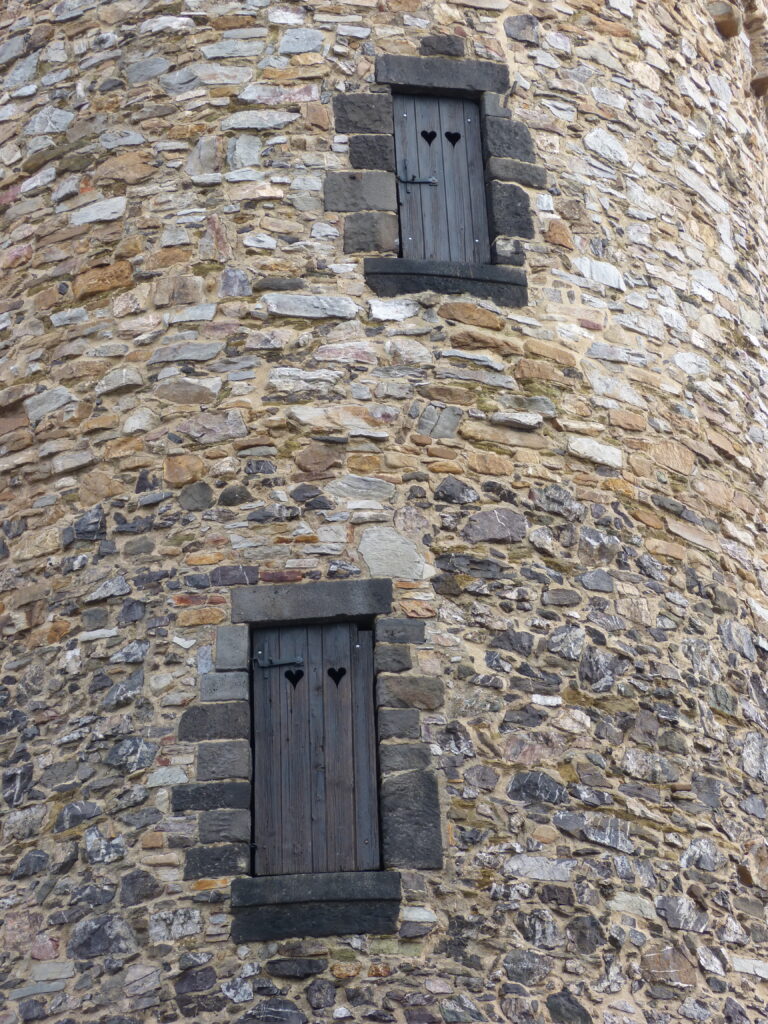
That one is the Rathausturm and it was built in the 1300s as part of the city fortifications.
In the 17th century those accused of witchcraft were held there to await execution, and in the 18th century the tower was used as a prison.
How could something with little heart-shaped openings in the tiny doors have been used for such awful purposes?
And this one is the Stumpfer Turm.
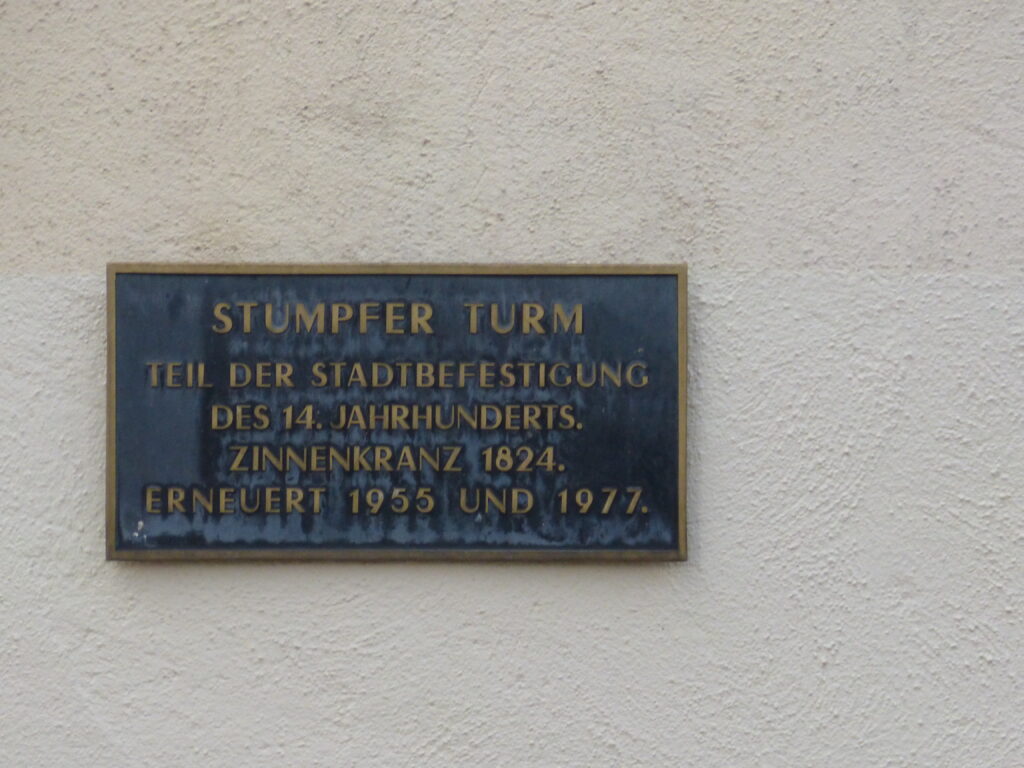
It was also part of the city fortifications in the 1300s and was renovated twice in the 19th century.
Did I hear someone ask “But where are all the half-timbered houses?”
Never fear.
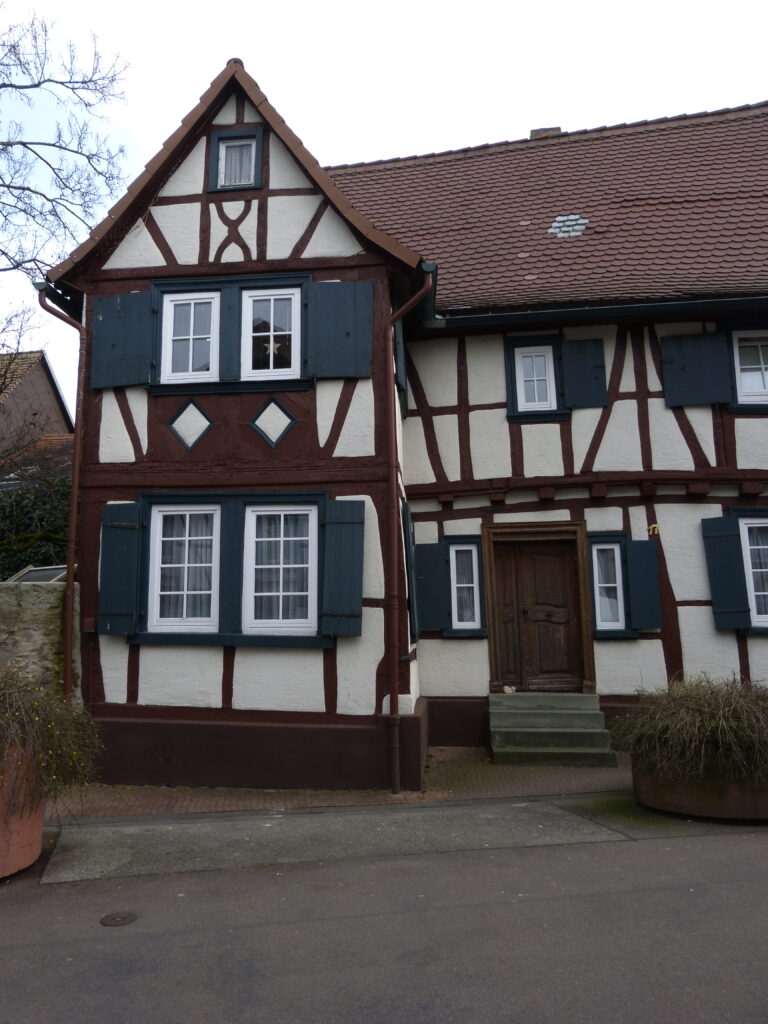
That is one of the oldest houses in Bad Hamburg, dating from 1583.
And this one is the very oldest.
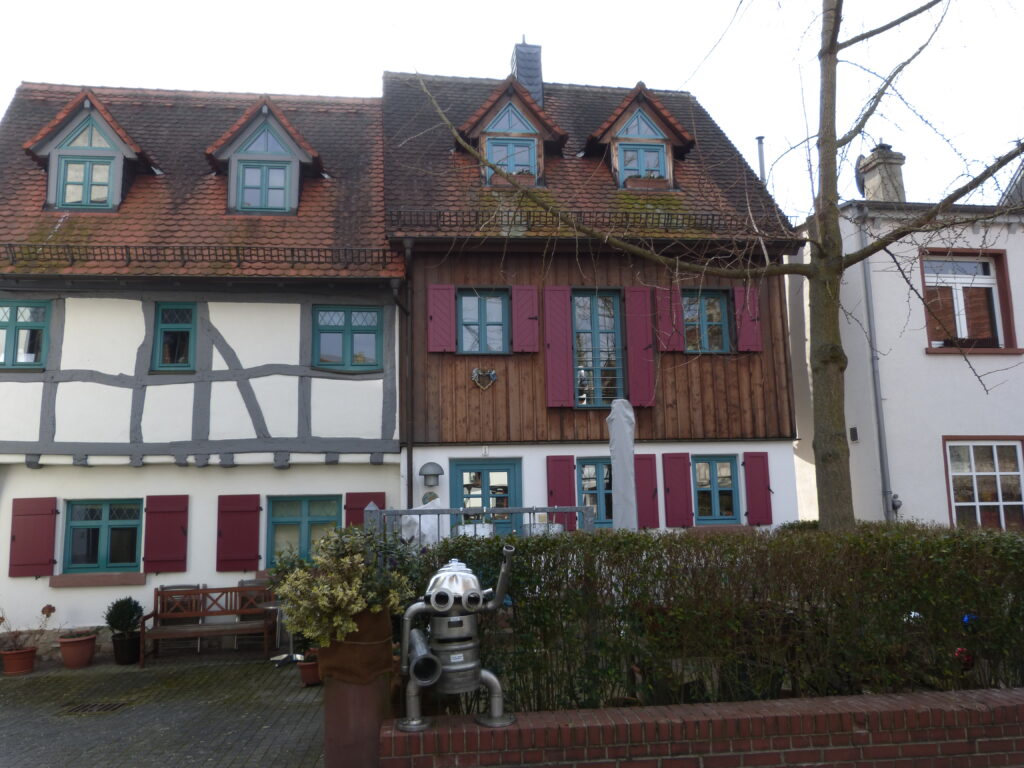
I thought it was funny that the oldest house in town had a robot-looking thing in front of it.
Old meets new.
And just like so many German towns have Witches Towers and half-timbered houses, they also have monuments to a dark part of their history.
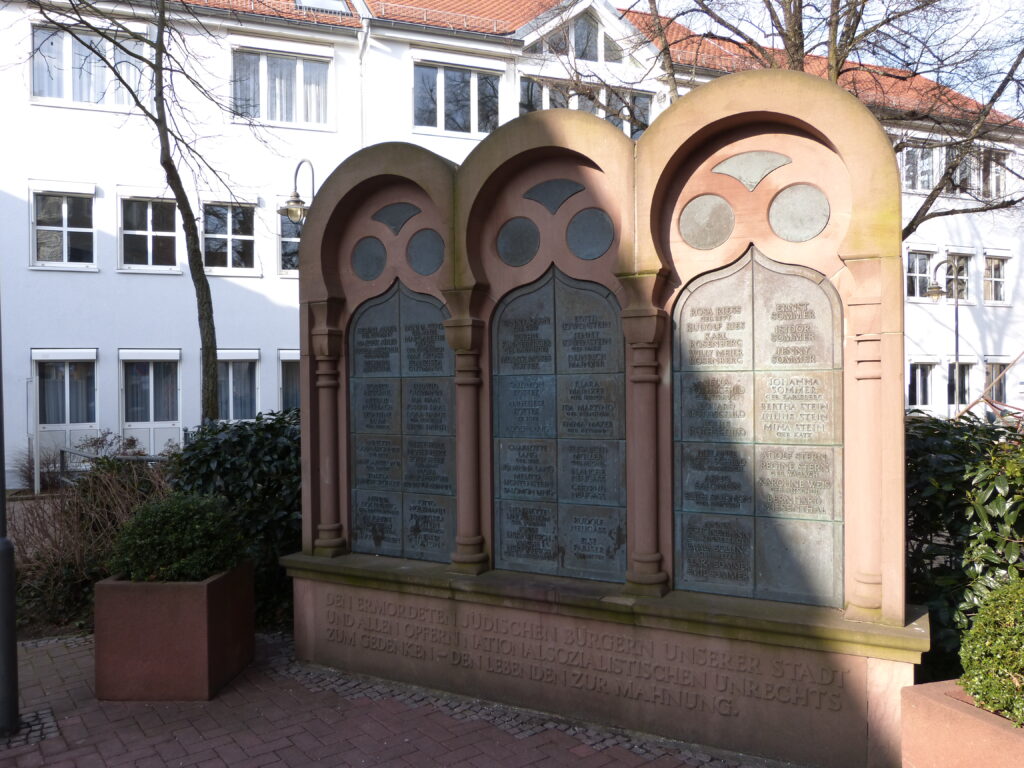
That’s a monument to the Bad Homburg’s Jewish residents who were killed during World War II.
It was built on the site of the former synagogue.
This fountain commemorates the yearly Lantern Festival.
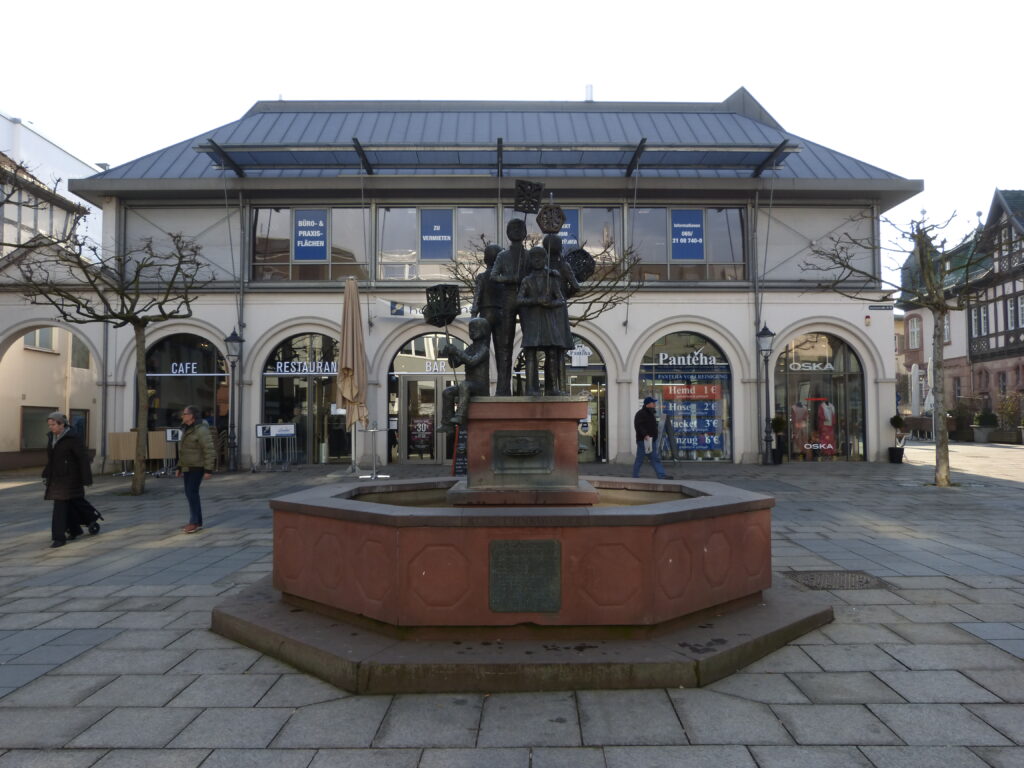
It’s apparently a very big deal that about half a million people attend each year.
After exploring the Old Town a little more we headed back to the Kurhaus, which is where our walk started and where the tourist information office is located.

